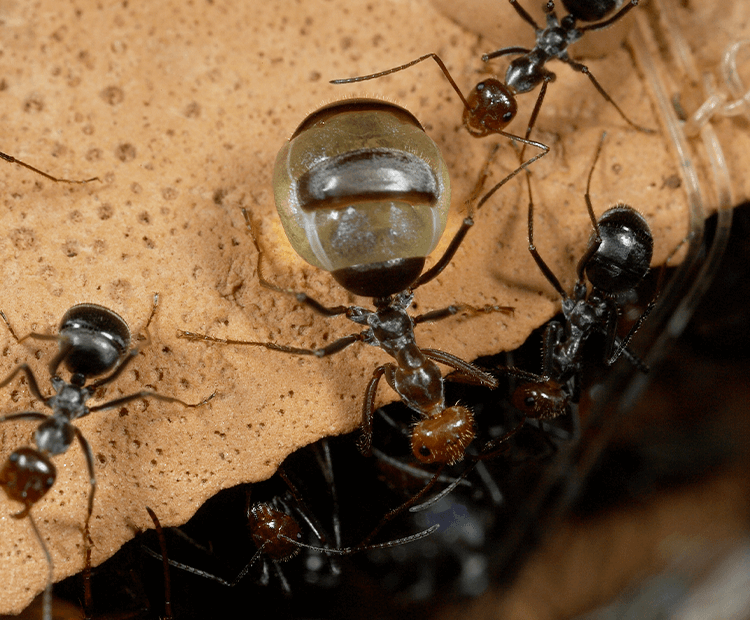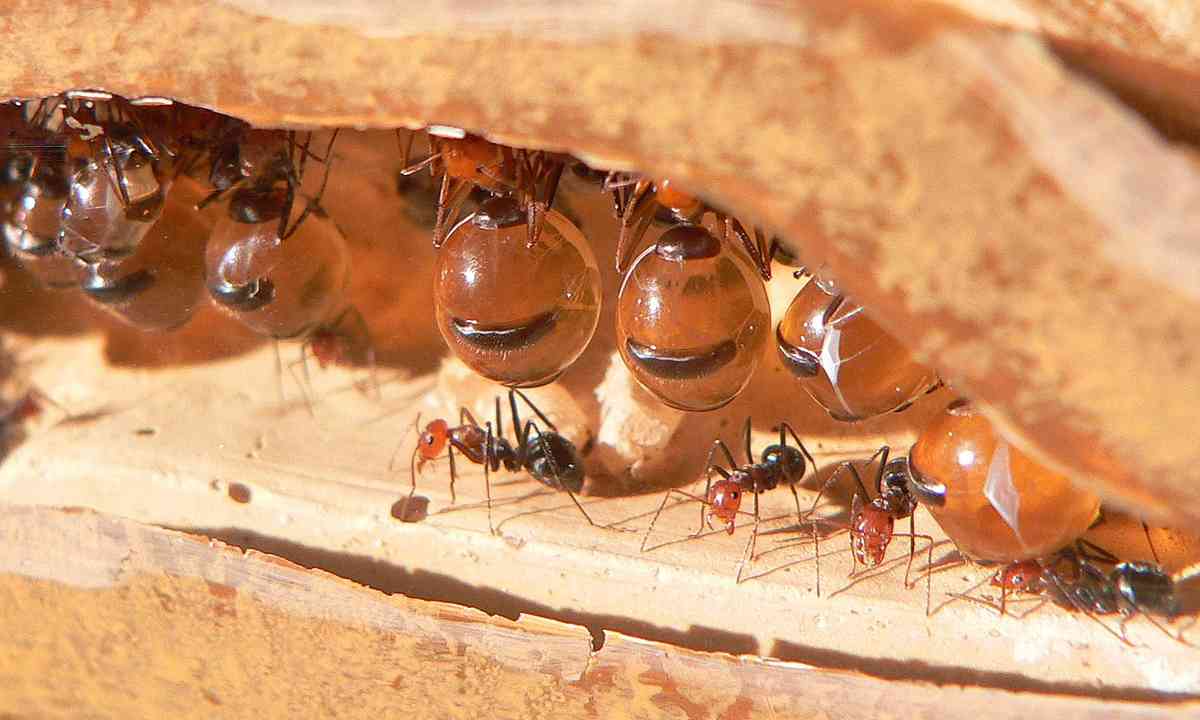Researchers have discovered that the honey produced by Australian honeypot ants has antibacterial and antifungal properties. This finding aligns with the knowledge of Indigenous communities who have been using the ant's honey as bush food and traditional medicine for thousands of years, including for treating colds and sore throats.
The species is primarily found in desert regions of Western Australia and the Northern Territory. Specialized worker ants, called replete, are given excess nectar by other ants. This causes their abdomens to become as big as small, amber marbles. They take on the role of "living pantries" and hang from the roofs of their nests, regurgitating the honey when there is a shortage of food. Australian researchers have examined the honey's properties and discovered that it is very effective in fighting Staphylococcus aureus bacteria, which is also known as golden staph.
The scientists discovered that the honey from the ants was just as effective against golden staph as manuka honey, and even more effective than jarrah honey, which is produced by honeybees.Dr. Kenya Fernandes, one of the study's authors from the University of Sydney, expressed amazement at the honey's specific activity against certain pathogens. It proved highly active against tough fungi like Aspergillus and Cryptococcus, which are challenging to eliminate.Dr. Fernandes explained that the worker ants might encounter Cryptococcus in trees and Aspergillus in hot, dry, arid desert soils, aligning with the honey's effectiveness against these pathogens in the ants' natural environment.

The researchers aim to find new compounds in the honey that could be used to create medicines that fight against microbes.Danny Ulrich, who operates Goldfields Honey Ant Tours with his mother and aunt, belongs to the Tjupan language group and provided the honeypot ants for the study. They often find the ant nests at the base of mulga trees.Collecting honeypot ants has been a long-standing tradition in his family, passed down through generations. According to Ulrich, it's typically the women who dig for the honey ants. The honey can be used to treat sore throats and applied topically as an ointment on wounds.To ensure sustainability, only a few chambers within a nest are taken at a time, and it might be a year or more before they return to that same nest, as stated by Ulrich.Ulrich explains that the ant honey has a consistency similar to maple syrup, less sweet and thick compared to bee honey, with a slight tangy taste. He suggests that it makes for a delightful sweet treat when enjoyed with fresh damper, butter, and apricot jam.
© Copyright 2023. All Rights Reserved Powered by Vygr Media.

























